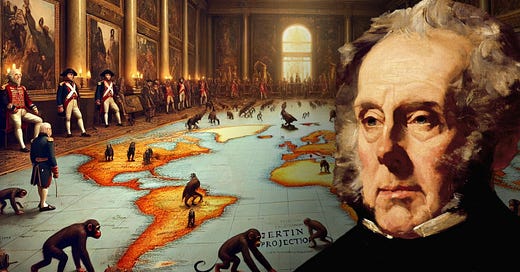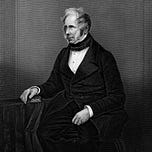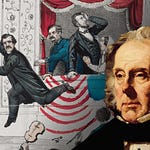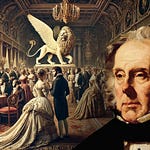Episode 02 - The Introduction to Palmerston's Zoo
Episode 03 - The Venetian Takeover of England: A 200-Year Project
Episode 05 - Bestial British Intelligence Of Shelburne and Bentham
Episode 07 - Palmerston Launches Young Turks to Permanently Control the Middle East
Episode 09 - Jim Crow, a Cultural Weapon in the Hands of the Confederacy
🌍 Introduction
Webster Tarpley’s Introduction to The Palmerston’s Zoo comprehensively analyzes Britain’s imperial reach in the 19th century. Set in Victorian London, it frames Britain as an empire unparalleled in global power, likened to a new “Rome” with Queen Victoria as its figurehead. Despite this monarchic image, the empire was primarily an oligarchy, with Lord Palmerston wielding extensive control over foreign policy. Through Palmerston and his network of influential allies, the book dives into Britain’s imperial strategy, depicting how figures like Giuseppe Mazzini, Napoleon III, and David Urquhart were leveraged to destabilize rival empires, particularly Russia and Austria.
Tarpley argues that British power came from manipulating nationalist movements, instigating revolutions, and maintaining ideological control. The text explores this “human zoo” of nationalism, where ethnic and nationalistic ideologies were cultivated and exploited by Britain to maintain control and division across Europe and the globe.
🏛️ Part 1: Britain as the “New Rome” in Victorian England
In 1850, London was the heart of the British Empire, the most formidable global power, which extended its influence over a vast territory. Britain’s approach to imperial dominance relied not only on its military and economic power but also on ideology. Tarpley details how Britain took inspiration from the Venetian oligarchy, emphasizing the aristocratic control of culture and beliefs to exert influence over colonies and European rivals. Queen Victoria, though the nominal figurehead, was more symbolic as Lord Palmerston led the empire through foreign affairs, becoming its de facto ruler in terms of policy and ideology.
Palmerston’s vision for Britain was clear: it was to act as the “new Rome,” a global empire with London at the center. This vision was solidified when Palmerston, proclaiming that every Briton held the privileges of a “Roman citizen,” projected British authority far beyond its borders, expecting its subjects and allies to respect British supremacy. By the time of Palmerston, Britain’s tactics had expanded to more sophisticated means, incorporating covert manipulation of revolutionary movements across Europe and even outside the continent.
🔥 Part 2: Lord Palmerston’s Strategies and “Three Stooges”
Lord Palmerston’s Power and Ideological Warfare
Palmerston, a Whig politician and longtime Foreign Secretary, was a strategic leader who saw revolutions and foreign uprisings as tools for British interests. To destabilize Britain’s rivals, he adopted a policy of fostering nationalism within the territories of competing powers. His method was not to conquer directly but to fragment other empires through internal conflicts and encourage nationalist revolts that divided loyalties and distracted attention from British imperial actions.
The “Three Stooges”: Mazzini, Napoleon III, and Urquhart
Tarpley presents Palmerston’s “Three Stooges” — Mazzini, Napoleon III, and Urquhart — as instrumental to British aims. They served not only as leaders in their own countries but also as unwitting agents advancing British interests.
Giuseppe Mazzini: An Italian nationalist, Mazzini championed revolutionary movements across Europe, establishing secret societies like Young Italy and Young Europe. Mazzini’s vision of nationalism was used by Palmerston to incite political instability, particularly within the Austrian Empire and the Italian states. Mazzini’s networks helped spread pro-independence sentiments among various ethnic groups, fostering divisions that aligned with British interests by weakening unified opposition from powers like Austria and Russia.
Napoleon III: French President turned Emperor Napoleon III, also known as Napoleon le Petit, provided Palmerston with the military backing needed to rival other European powers. Napoleon’s alliance with Britain gave Palmerston a partner in conflicts such as the Crimean War, in which France’s involvement tilted the balance of power in Britain’s favor. Despite Napoleon’s imperial ambitions, his alignment with British interests reflected Palmerston’s ability to manipulate European powers into serving Britain’s overarching strategy.
David Urquhart: The third Stooge, David Urquhart, was an eccentric Scottish aristocrat and anti-Russian activist who amplified anti-Russian sentiment within Britain. Urquhart, a former diplomat and admirer of Ottoman culture, saw Russia as the root of all evil, a view that Palmerston exploited to maintain Britain’s anti-Russian stance. Tarpley credits Urquhart with helping popularize propaganda techniques that positioned Russia as Britain’s primary adversary, foreshadowing modern media manipulation.
🏰 Part 3: The “Human Zoo” and Nationalist Movements
Nationalism as an Imperial Tool
Under Palmerston, Britain manipulated nationalist sentiments to fragment and weaken Europe’s multinational empires. Mazzini’s secret societies, like Young Italy, Young Poland, and Young Germany, are described as part of a broader network of “ethnic theme parks” within Palmerston’s “human zoo.” Each nationalist movement, whether Italian, Polish, German, or Slavic, was carefully orchestrated to disrupt the cohesion of rival empires. These “theme parks” not only stirred up political unrest but also spread British influence within the territories they targeted.
Ethnic Theme Parks of Division
Each “theme park” symbolized an ethnic or nationalist movement with its own territorial ambitions, driven by the idea of self-determination. Mazzini’s creation of Young Europe represented the epitome of this ideology, advocating for independence and self-rule based on ethnic identity. By promoting these nationalist divisions, Britain not only spread chaos among its rivals but also limited their capacity to unify against British interests. Mazzini’s organizations, for example, agitated for the separation of Italian states from Austria’s influence, weakening Austria’s hold on the region.
The Impact of Mazzini’s Nationalism
Mazzini’s groups, designed to ignite revolts and anti-government movements, often clashed with one another as much as they targeted external powers, generating an atmosphere of distrust among European powers. This internal turmoil kept potential British adversaries embroiled in their own conflicts. Tarpley posits that the long-term effect of these movements sowed the seeds for many of the nationalistic clashes that defined 20th-century conflicts, with Britain reaping the benefits of a divided Europe.
⚔️ Part 4: British Manipulation in Major Conflicts
Crimean War
The Crimean War exemplifies Palmerston’s use of alliances to pursue British objectives. With Napoleon III’s support, Britain challenged Russia’s ambitions in Eastern Europe, consolidating its influence in the region. This alliance exemplifies Palmerston’s approach of using foreign allies to engage Britain’s rivals, ensuring Britain’s supremacy without bearing the entire burden of war.
Italian Unification
Italy’s unification efforts, spearheaded by figures like Mazzini and Cavour, provided Palmerston an opportunity to further weaken Austria, one of Britain’s primary rivals. By encouraging Italian independence, Palmerston effectively eroded Austrian power in the region, reinforcing Britain’s dominance.
Opium Wars and Colonial Expansion
Beyond Europe, Britain’s involvement in China’s Opium Wars highlighted its global reach and aggressive policies for economic control. Palmerston, who pushed for free trade, saw the opium trade as essential to British interests in Asia. The Opium Wars, waged under the guise of trade freedom, granted Britain control over Hong Kong and treaty ports, reinforcing its economic dominance in China.
🗝️ Part 5: The Legacy of British Imperial Ideology
The “Venetian Model” of Control
Tarpley emphasizes the “Venetian model” of oligarchic control as central to Britain’s imperial strategy. He describes how British leaders, drawing on Venetian techniques of oligarchic rule, prioritized indirect control and manipulation, rather than outright conquest. The Venetian influence extended to British governance, with the aristocracy adopting a calculated, Machiavellian approach to foreign policy and empire-building. Figures like Jeremy Bentham and John Stuart Mill, proponents of utilitarianism, underscored this strategy, emphasizing control through influence and ideology.
Britain’s Influence Beyond the Empire
Britain’s imperial influence continued into the 20th century, with the geopolitical tensions Palmerston cultivated eventually contributing to both World Wars. Tarpley argues that Britain’s manipulation of nationalist movements created a precedent for future conflicts, positioning Britain as a persistent player in global affairs even as its formal empire waned.
🎯 Conclusion
Tarpley’s The Palmerston Zoo sheds light on the often-hidden dynamics of British imperialism, emphasizing how Britain’s strength lay not only in its military or economy but in its strategic use of ideology and manipulation. By backing nationalist movements and using figures like Mazzini, Napoleon III, and Urquhart, Britain successfully destabilized its European rivals while expanding its colonial influence. Palmerston’s use of nationalism as a tool of division helped Britain maintain its supremacy by turning potential allies into adversaries. The Venetian model of oligarchic control is presented as the intellectual foundation of British imperialism, with Britain using ideological control as a powerful force in shaping global politics. Ultimately, The Palmerston Zoo asserts that British influence persisted through a complex web of nationalist manipulation, shaping the geopolitics of Europe and beyond well into the 20th century.
This exploration underscores Britain’s reliance on psychological and ideological control, marking its imperial legacy as one built not merely on force but on a calculated orchestration of world events.
🕰 Timeline of Events in The Palmerston Zoo
Early 1800s: The Roots of British Imperial Strategy
Early 1800s: The British Empire reaches new heights, expanding its influence globally, following victories in the Napoleonic Wars.
1820s-1830s: Britain solidifies control in India, as the East India Company expands British rule through economic control and military force.
1830s-1840s: Palmerston and the Formation of Imperial Policy
1830: Lord Palmerston becomes Foreign Secretary, initiating a period of British interventionism aimed at destabilizing rival European powers.
1831: Giuseppe Mazzini founds Young Italy, promoting Italian nationalism. Supported by Palmerston, Mazzini’s movement begins advocating for independence from Austria.
1834: Mazzini founds Young Europe, a multinational network pushing for ethnic nationalist revolutions across Europe, creating factions like Young Germany, Young Poland, and Young Switzerland.
1842: First Opium War concludes, securing Hong Kong and other trade privileges for Britain in China, setting the stage for expanded British influence in Asia.
1848: Year of Revolutions
January 1848: Palmerston instigates a revolution in Sicily, which catalyzes the wider European Revolutions of 1848. Throughout Europe, nationalist uprisings topple governments.
1848: Revolts erupt across the Austrian Empire, France, Germany, and Italy, weakening European monarchies and paving the way for Britain’s indirect control over European politics.
March-June 1849: Mazzini briefly governs the Papal States, with Palmerston’s support, seeking to establish a secular Italian Republic.
1850s: Alliance-Building and Nationalist Exploitation
1852: French President Louis Napoleon Bonaparte, soon to be Napoleon III, aligns with Palmerston, giving Britain military leverage against European rivals.
1853-1856: Crimean War—Palmerston and Napoleon III jointly wage war against Russia to check Russian influence in Eastern Europe and the Ottoman Empire.
1859: Italy’s Second War of Independence—Palmerston encourages Napoleon III to back Italian unification efforts, weakening Austria’s hold on the Italian states and paving the way for a unified Italy.
1860s: Expanded Colonial Influence and Manipulation
1860: Treaty of Peking secures further privileges for Britain in China after the Second Opium War, solidifying British dominance in Asian trade.
1861-1865: American Civil War—Palmerston and British agents indirectly support the Confederacy to destabilize the United States and prevent a consolidated American power.
1863: Polish Uprising against Russian rule; Palmerston’s influence fosters revolts, intending to weaken Russia further. British-backed propaganda supports these revolutionary efforts.
1870s: Decline of British Alliances in Europe
1870-1871: Franco-Prussian War—Napoleon III is defeated by Prussia, leading to his exile. This marks the end of Anglo-French collaboration and diminishes British influence in European land conflicts.
1870: Italian unification is largely completed, achieving the vision Mazzini and Garibaldi fought for, yet Britain’s influence in Italy remains strong through Mazzini’s network.
Legacy and Long-term Impact
Late 1800s-Early 1900s: Britain’s strategic use of nationalist movements continues to influence global geopolitics, contributing to a fractured Europe.
1914-1918: World War I erupts, partially rooted in the nationalist conflicts Britain once fueled, especially in the Balkans and among European powers.
1939-1945: World War II—European instability persists as Britain’s imperial legacy and former alliances reshape global power struggles.
Post-1945: Decolonization—Former British colonies gain independence, but the “divide-and-rule” tactics continue to impact former colonies and global relations.
Palmerston’s Zoo Series
For the past 30 years, media and academia have largely ignored the groundbreaking lectures presented at the President's Day 1994 Schiller Institute and International Caucus of Labor Committees conference. Yet, they contain some of the most vital historical insights for anyone seeking to understand the forces shaping today's world. "Palmerston's Zoo" is a deep exploration into the intricate workings of British imperialism—revealing the key figures, strategies, and philosophies behind its shadowy influence over global politics. This series brings together eight distinct but interwoven narratives that expose the power structures, manipulations, and covert operations that have determined the course of world history.
The Duke Report presents this podcast as an opportunity to breathe new life into these timeless analyses, giving listeners a comprehensive perspective connecting past imperial strategies and present-day geopolitics. The impact of these lectures is staggering, providing crucial context for understanding current events—a context that has never been widely disseminated through mainstream academic or media channels. The insights offered here are not just historical; they are the key to unlocking the deeper narrative of how global influence operates, making this possibly the most important history lesson for 21st-century humans. Join us on a journey that defies conventional narratives, challenges accepted truths and provides an essential map to navigate the complexities of modern power.
Links to authors and sources:
Let me know if anyone has been left out
Episode 02 - The Introduction to Palmerston's Zoo
Episode 03 - The Venetian Takeover of England: A 200-Year Project
Episode 05 - Bestial British Intelligence Of Shelburne and Bentham
Episode 07 - Palmerston Launches Young Turks to Permanently Control the Middle East
Episode 09 - Jim Crow, a Cultural Weapon in the Hands of the Confederacy















Share this post